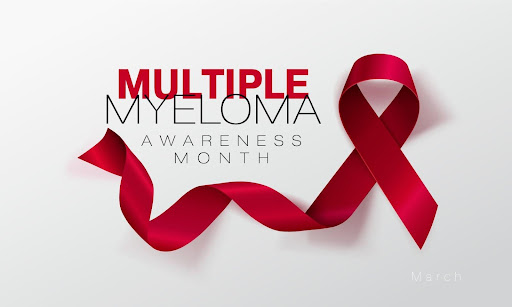
What is Multiple Myeloma?
The risk of developing multiple myeloma is relatively low, but the American Cancer Society estimates doctors diagnose nearly 35,730 new cases yearly. March is National Multiple Myeloma Awareness Month, making it the ideal time to learn about the condition to understand better your risk factors and how to keep your body healthy.
What is multiple myeloma?
Multiple myeloma is a cancer of the plasma cells. Plasma is white blood cells that create antibodies to fight infections. When someone has multiple myeloma, cancerous plasma cells build up in the bone marrow and produce abnormal proteins. If left untreated, multiple myeloma may cause frequent infections, anemia, thinning bones, or reduced kidney function.
Some people don’t have any signs or symptoms of multiple myeloma, especially in the early stages. As the disease progresses, people may experience bone pain, nausea, constipation, fatigue, or a loss of appetite. Mental fogginess, frequent infections, excessive thirst, or leg numbness may also occur in someone with multiple myeloma.
Can I prevent multiple myeloma?
Researchers are still unclear on the exact cause of multiple myeloma. However, it’s believed to develop from monoclonal gammopathy of undetermined significance (MGUS). Similar to multiple myeloma, abnormal plasma cells create abnormal proteins, but not enough to cause damage to the body.
Multiple myeloma is most common in older adults after the age of 60. It’s also most prevalent in Black males and those with a family history of the condition. While there’s no definitive way to prevent multiple myeloma, understanding your risk factors can help you and your doctor determine your probability of developing the disease. If you have MGUS, your doctor may suggest regular blood work to ensure your protein levels don’t become harmful.
Even if you don’t have MGUS but do have other risk factors for multiple myeloma, your doctor may suggest testing, especially if you’re experiencing signs or symptoms of the disease. Doctors can test for multiple myeloma through blood, urine, or imaging testing. You may also need a bone marrow examination where doctors remove a sample.
How is multiple myeloma treated?
If you’re diagnosed with multiple myeloma, your doctor may not recommend treatment immediately, especially if it’s an early stage of cancer and you’re not experiencing any symptoms. When your doctor decides it’s an appropriate time for treatment, standard options include various types of therapy, such as chemotherapy, targeted therapy, and immunotherapy.
Sometimes, you may have to undergo corticosteroids, medications to regulate the immune system and control inflammation. Some people may also need a bone marrow transplant or stem cell transplant.
Working with Visiting Angels
If you or a loved one has multiple myeloma and needs assistance at home, the team at visiting angels can help. Our team of professional caregivers can provide transportation to and from doctors’ appointments, mobility assistance, or personal care services.
Our Garland office works with seniors and families in Fate, Heath, Lucas, Quinlan, Rockwall, Rowlett, Royse City, Sachse, West Tawakoni, and Wylie. If you’d like to learn more about our services or schedule a complimentary consultation, message us or call 214-703-8123.
